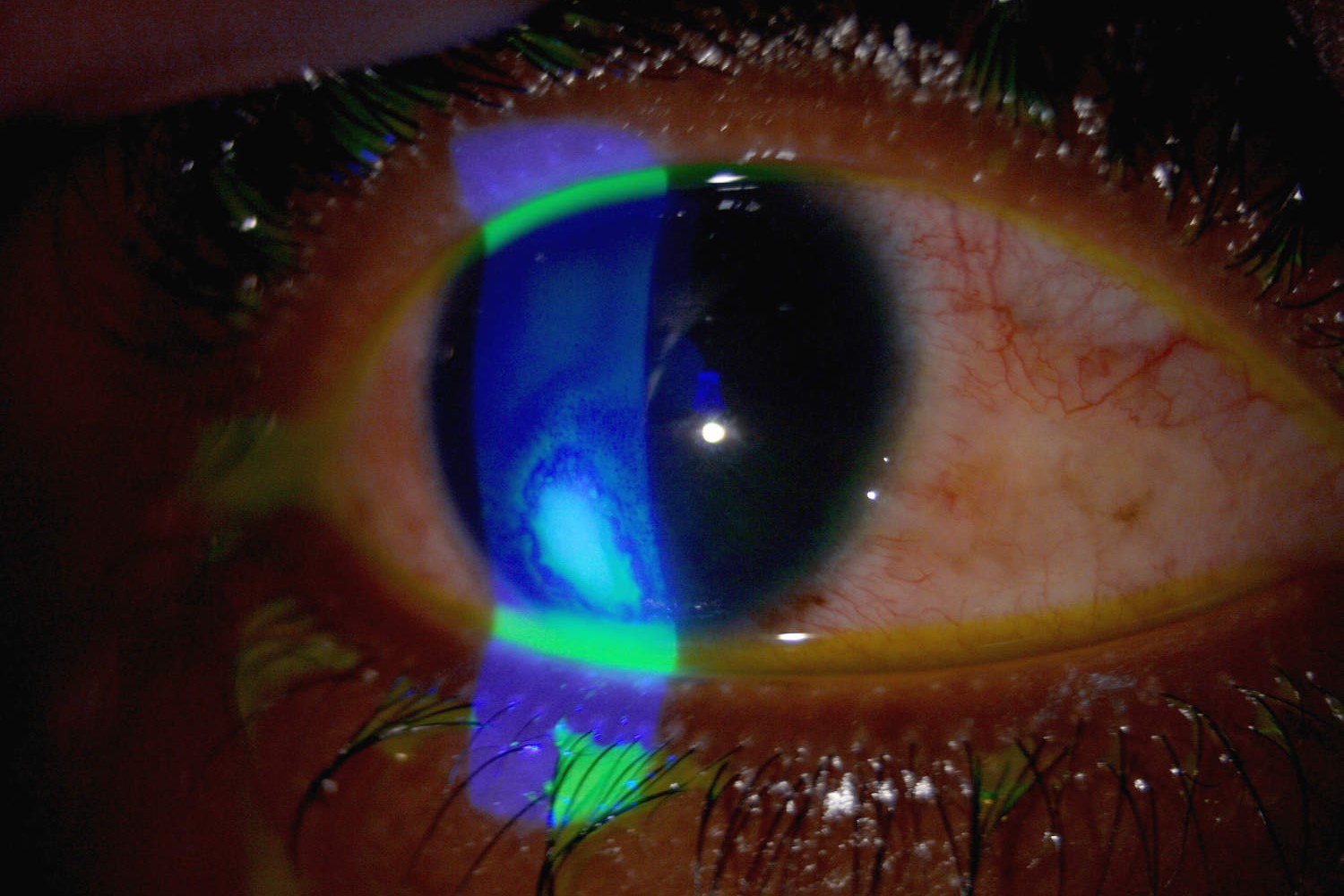
What is corneal abrasion and how to treat it
Corneal abrasion: Everyone has probably experienced an annoying and often painful foreign body sensation in the eye after rubbing too hard or after a contusion against an object, or even after wearing contact lenses for too many hours
This is almost always a corneal abrasion that resolves spontaneously within a few days.
But if this is not the case, what should we do?
What it is and how to recognise a corneal abrasion
First of all, we must remember that the cornea is a transparent membrane that forms the front and outer part of the eyeball; hence the ease with which it can be traumatised.
It is devoid of vessels (the reason for its transparency) and richly innervated, so that affections affecting it are particularly painful.
It is made up of five layers, the outermost of which is the epithelium, in which the lesions we are talking about occur.
Symptoms are classically reported as a foreign body sensation (typical is the phrase ‘I have a speck in my eye’), pain and redness.
Heavy tearing is often present and vision can also often be blurred, as the loss of even a few millimetres of epithelium alters the normal transparency of the cornea.
What are the most frequent causes of corneal abrasion
It is a problem that we often face in our daily practice as often a simple accidental contact with the fingernails (typical is the one inflicted by babies on the eyes of mothers holding them!) or with hands that are not always clean or even contact with leaves or branches in gardening work, results in abrasion.
Equally frequent is the observation of abrasion in contact lens wearers who can damage the cornea when putting them on or taking them off, or by inadvertently bringing a foreign body into the eye that gets trapped between the inner surface of the lens and the cornea.
The specialist’s advice is always to wash your hands very thoroughly before using the lenses or to give preference to so-called ‘disposable’ lenses that require less handling and to lubricate frequently with artificial tears, especially if you plan to wear them for a fairly long period of time.
Of course, it is always good to protect your eyes with sunglasses if you go cycling or motorcycling (with ‘wrap-around’ frames that also protect from the side).
Treatment and recovery time
Treatment always depends on the extent of the injury.
It is however a good rule to resort to the application of lubricating eye gels or ointments, in combination with antibiotics to avoid bacterial over-infection, which finding a ‘gateway’ could lead to serious infectious complications, such as bacterial keratitis with formation of ulcers that could require very long healing processes, often leaving scars that would permanently alter vision.
In the vast majority of cases, an abrasion heals in three to four days, especially if an occlusive bandage is applied, which, by avoiding continuous rubbing of the eyelid, speeds up the reforming of the corneal epithelium.
Remedies for corneal abrasion: what to do
If your eye has come into contact with a foreign body, it is a good idea to follow these general suggestions, pending a possible specialist examination
- wash your hands thoroughly and rinse the eye with plenty of running water (preferably cold);
- do not rub the eye further with your hands;
- avoid using eye drops from household medicines, they could be unsuitable or worse still contain substances, e.g. cortisone, which would aggravate the clinical picture;
- if a foreign body is present, avoid removing it yourself;
- have a specialist examination as soon as possible or go to the nearest eye care emergency room.
Read Also:
Emergency Live Even More…Live: Download The New Free App Of Your Newspaper For IOS And Android
4 Reasons To Seek Emergency Care For Vision Symptoms
Autoimmune Diseases: The Sand In The Eyes Of Sjögren’s Syndrome
Blepharoptosis: Getting To Know Eyelid Drooping
Corneal Abrasions And Foreign Bodies In The Eye: What To Do? Diagnosis And Treatment
Corneal Abrasions And Foreign Bodies In The Eye: What To Do? Diagnosis And Treatment
Wound Care Guideline (Part 2) – Dressing Abrasions And Lacerations
Contusions And Lacerations Of The Eye And Eyelids: Diagnosis And Treatment
Macular Degeneration: Faricimab And The New Therapy For Eye Health
First Aid For Dehydration: Knowing How To Respond To A Situation Not Necessarily Related To The Heat
Hydration: Also Essential For The Eyes
What Is Aberrometry? Discovering The Aberrations Of The Eye
Red Eyes: What Can Be The Causes Of Conjunctival Hyperemia?


